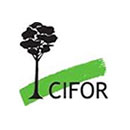Finnish forest owners overwhelming comply with the country’s forestry laws. In 1997, 96% of forest owners apparently complied with the country’s 1996 Forest Act. Since the Act was passed the government has not discovered a single violation that merited a fine or imprisonment. Forest products provide 30% of Finland’s exports and despite massive logging and extremely slow timber growth, the volume of standing timber has been steadily rising. It was not always like that. As recently as 1940, the government excluded 700,000 hectares of forest from timber production because the owners violated forestry laws. That figure declined to 240,000 hectares in 1970 and only 4,000 hectares in 1996.
’Enforcement of Forestry Laws in Finland’ by Sofia Hirakuri looks at how Finland achieved its success. She shows that the Finns combine traditional law enforcement that includes field inspections on 3-5% of forestland with widespread forest extension and training and economic incentives for forest owners to comply with the law. Over a period of five years in the late 1980s, the Finnish extension service directly contacted 82% of all forest owners. Incentives include low interest loans, subsidies, and tax exemptions for forest management activities. However, much of the money for these incentives comes from taxes on forest production itself. Law enforcement is decentralized and forest owners associations actively participate. When forestry officials do identify irregularities they first negotiate with forest owners, using a consensus based approach. They only sanction owners if they fail to cooperate. Finland also has a National Forest Certification System that covered 13.5 million hectares of forest in 1999 that includes external independent audits of forest management.
General cut backs in government spending in the early 1990s led to a decline in forestry law enforcement and extension activities. But funding went up sharply again this year in response to concerns about poor forest regeneration and the need to focus more on biodiversity conservation.
Many people will be surprised to hear that Finnish law does not require forest owners to have forest management plans, although the government encourages them to use management plans to improve their operations. Plans are required, however, to qualify for loans or subsidies.
Three quarters of all timber comes from private forests, owned by 440,000 mostly small forest owners, each of whom has an average of 36 hectares of forest. To keep forest certification from being too expensive for small forest owners, the country uses a system of ’regional certification’. Entire regions are certified as having sustainable management, rather than individual owners. Small owners also make much more simple forest management plans than larger owners do. As a result, Finland’s forestry approach does not discriminate against small holders as most other countries’ systems do.
We want you to share Forests News content, which is licensed under Creative Commons Attribution-NonCommercial-ShareAlike 4.0 International (CC BY-NC-SA 4.0). This means you are free to redistribute our material for non-commercial purposes. All we ask is that you give Forests News appropriate credit and link to the original Forests News content, indicate if changes were made, and distribute your contributions under the same Creative Commons license. You must notify Forests News if you repost, reprint or reuse our materials by contacting forestsnews@cifor-icraf.org.
Further reading
To obtain a free electronic version of the paper and / or send comments about this message you can write Sofia Hirakuri at: mailto:srhiraku@wulaw.wustl.edu.




